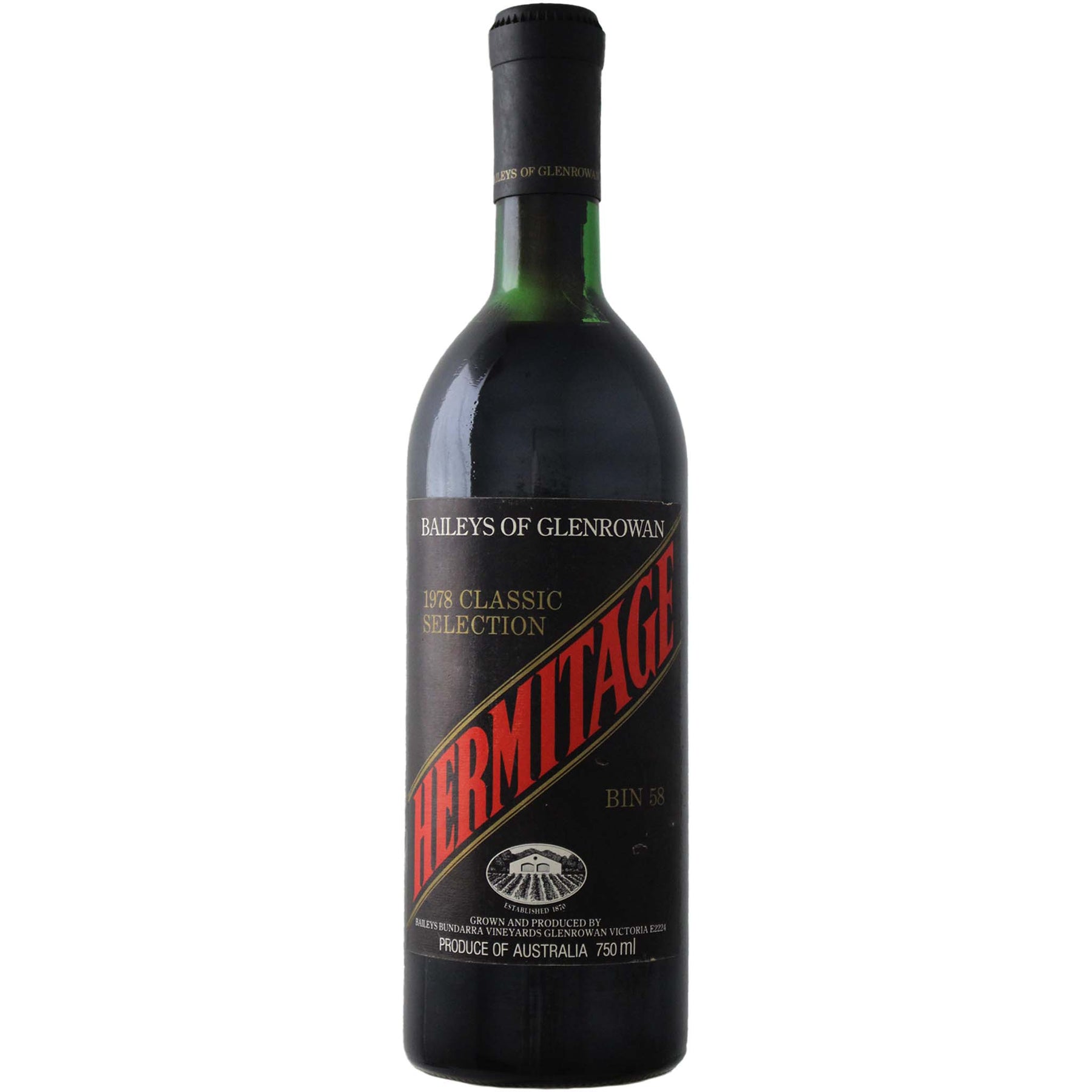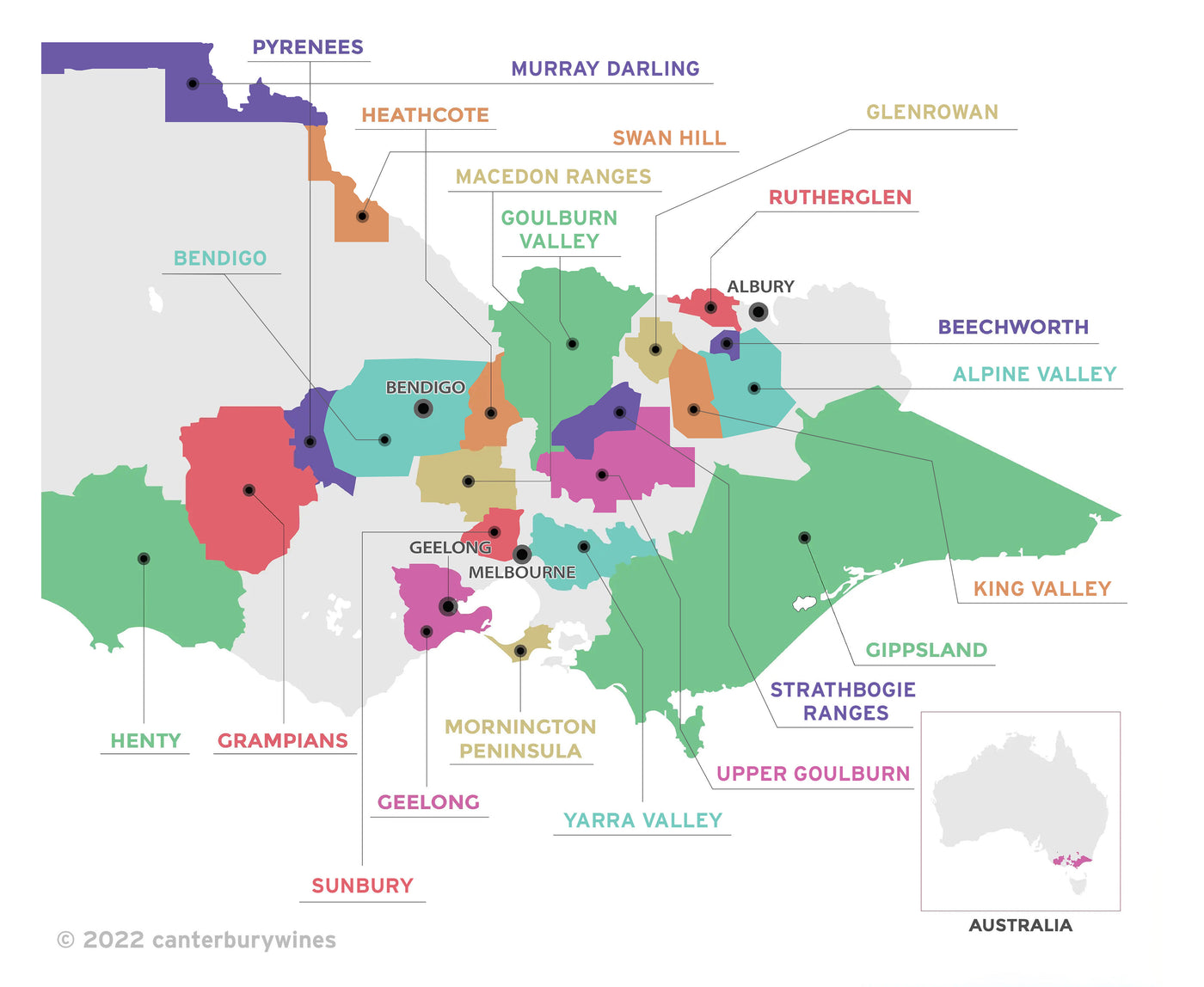
Baileys Bin 58 Hermitage 1978
Style: Red Wine
Closure: Cork
Baileys Bin 58 Hermitage 1978
Warehouse
34 Redland Drive
Vermont VIC 3133
Australia
Critic Score: Not Rated
Alcohol: Not Stated
Size: 750 ml
Drink by: Now
"Baileys of Glenrowan celebrated its 150th anniversary in 2020. Baileys, originally known as Baileys Bundarra, was the first winery I visited as a young graduate engineer. My passion for wine was kindled that day and the first wine I purchased was the trophy winning 1975 Baileys Bin RLS Hermitage. My love affair with Baileys blossomed over the ensuing decade and their wines constituted a large part of my cellar. Their red wines on release were quite heroic, the generous blackberry fruit often masked by a sea of tannins. However with bottle age the wines became gloriously complex, the astringency dissipating and allowing the blackberry fruit, in all its glory, to take centre stage. Occasionally I pull out a bottle of old Baileys (circa 1978) from the cellar, and if the bottle is good (there are no great wines, only great bottles), the depth of ripe blackberry fruit is extraordinary and I am transported back in time." Nick Munday, Canterbury Wines
"I've enjoyed some venerable Baileys reds and found them superb at 20+ years." Huon Hooke
About the winery

Baileys of Glenrowan winery has a very long and cherished history. The story began in 1853 when Richard Bailey purchased a farming property at the southern foot of the Warby Range near Glenrowan. He named the property Bundarra, an Aboriginal word which meant 'meeting of the hills'.
In 1866, son Varley Bailey planted vines to supplement the grazing activities on the farm, choosing the rich, red granite soil found on part of the property. The first vintage was made in 1870 and demand for the wines – particularly fortified – led to significant expansion of the plantings. By 1892 the wines were sold locally, in Melbourne and exported to England.
In the 90s the region suffered a devastating outbreak of Phylloxera, an aphid that feeds on vine roots. The Baileys vineyards were destroyed, and many winemakers were ordered to destroy their vineyards. In 1904, undeterred, Varley replanted the vineyard with Phylloxera resistant rootstock. The original 1904 Shiraz Block continues to produce outstanding wines to this day.
When Varley died in 1931, his son Alan Bailey took over the running of the winery and made the wines using the same techniques as his father and grandfather before him. During Alan's reign of 40 years Baileys produced many outstanding wines, and the Hermitage, with its distinctive red-stripped label, quickly built a loyal following.
In 1972 Alan Bailey sold the winery to Davis Consolidated Industries, who wanted to diversify into wine production. Harry Tinson took over as winemaker (his initials HJT appear on the labels) until he retired in 1986. Harry enhanced Baileys' reputation as a maker of quality red table wines and fortified wines.
Mildara Blass (now called Beringer Blass Wine Estates) acquired Baileys in 1996. Paul Dahlenburg also joined Baileys, and after working tirelessly for nearly ten years, he became Baileys' Chief Winemaker in 2004. Paul has overseen an expansion in the vineyard and the construction of a 2000t capacity winery. The cellar door has a heritage museum, winery viewing deck, contemporary art gallery and landscaped grounds preserving much of the heritage value.
Treasury Wine Estates, who subsequently bought Mildara Blass (and hence Baileys) sold the vineyards and winery to Casella Family brands in December 2017.
Throughout all the assorted corporate ownership, the talented and committed Paul Dahlenburg has remained at the helm. Paul and the viticulture team are committed to organic winemaking - Baileys released their first organic Shiraz in 2012 and today the winery, cellar door and vineyards (143ha) are all 100% certified organic. They continue to use restored, 100 year-old basket press and old world open fermentation practices in their winemaking. Their aim is to make wines that whisper the stories of their roots.

Victoria
Victoria is home to more than 800 wineries across 21 wine regions. The regions are Alpine Valley, Beechworth, Bendigo, Geelong, Gippsland, Glenrowan, Goulburn Valley, Grampians, Heathcote, Henty, King Valley, Macedon Ranges, Mornington Peninsula, Murray Darling, Pyrenees, Rutherglen, Strathbogie Ranges, Sunbury, Swan Hill, Upper Goulburn and Yarra Valley.
Victoria's first vines were planted at Yering in the Yarra Valley in 1838. By 1868 over 3,000 acres had been planted in Victoria, establishing Victoria as the premier wine State of the day. Today, the original vineyards planted at Best's Wines are among the oldest and rarest pre-phylloxera plantings in the world.
Victoria's climate varies from hot and dry in the north to cool in the south and each wine region specialises in different varietals. For example, Rutherglen in the north is famous for its opulent Muscats and Topaque and bold reds, while the many cooler climate regions near Melbourne produce world class Chardonnay and pinot Noir. Victoria is truly a wine lover's playground.

